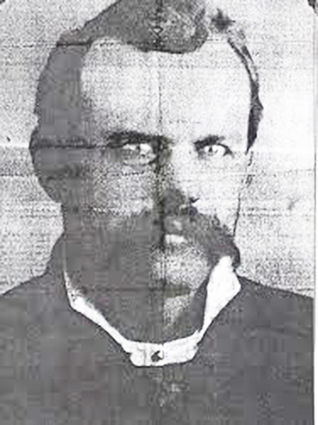Was Finkel a "Last Stand" Survivor?
March 19, 2020
By Gary Lentz
Special to the Dayton Chronicle
–Continued from Gary Lentz's informative program at the Blue Mountain Heritage Society's fundraiser in February, as started in the March 12 edition.
DAYTON–After meeting to learn the history of the Lewis and Clark Trail State Park, then Ranger Gary Lentz and Touchet Valley native Gordon Bateman, found they were kindred spirits regarding General George Armstrong Custer and the Battle of the Little Bighorn. Gordon Bateman asked if Lentz had ever heard of Frank Finkel?
"I'd never heard of him," Lentz said. "In all the time that I'd been studying the battle, the staff of the National Park Service gave Frank Finkel no credit whatsoever.
"To them he was just another storyteller, like the other 69 who said they knew what happened there."
And one day, this man [Bateman] came in and said that, and then he showed me some of the things he had studied.
We wanted to answer those questions, Lentz said of his and Bateman's common interest. "From there, we pooled our information and tried to find proof, or denial, of what Frank said."
First, the two historians had to understand what he said, in the context of the time. "Did people know at the time he said it, what we know today, from archeological excavations, and other stories?" Lentz asked. "Did he say it before anybody knew it? Turns out he did."
Lentz continued: We found several enlistment papers from Frank Hall. Now, you can fake a lot of things: You can tell them where you're from; you can tell them your age, you can fake things. There's two things you can't fake: one is how tall you are and Frank Finkel was a very tall man. According to most reports, between 6' 1" and 6' 4". You don't hide that very well. And the other thing is he had steel-grey eyes. You don't hide that very well.
And so those two things were on the one enlistment paper we found. Six-one or 6' 4" is very tall for a horse trooper, Lentz said. And, indeed, people in his company and before that, who kept journals, said that they had a very tall man in their company. The tallest in the regiment, which meant all 12 companies.
We even contacted Frank Finkel's great grandson, Milton Kosch, and obtained some samples of his handwriting. It compared favorably with known signatures from military records and later in life. "They're not exactly the same but noticeably similar," Lentz said.
People's handwriting and signatures do change over a period of time, he said, and sometimes they evolve in different ways, but it is pretty close. But it's not conclusive proof.
We decided to analyze Finkel's story with known facts, especially those facts that were unknown to most researchers. How would he know if he wasn't there? Well, it turns out there is a way and I'll tell you about that later.
Frank Finkel said that General Custer rode down Medicine Tail Coulee where he thought the west end of the camp was located. This Indian camp was almost four miles long, and when Reno attacked one end of it, Custer thought he would be able to ride right down that coulee and attack the other end of it.
When he got down that coulee, he found out there was still a lot of camp on the other end. So he went back up the coulee.
But which way he went, and the fact that he even went down that coulee, nobody knew for sure. But Finkel told us which way he went.








